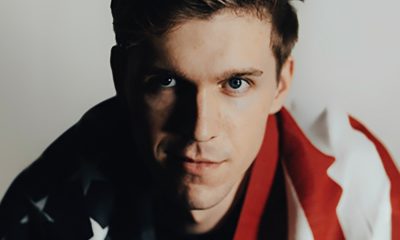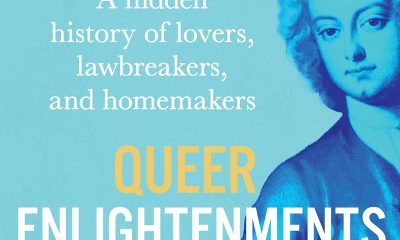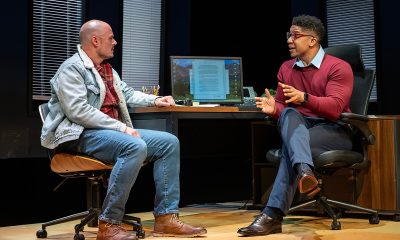Arts & Entertainment
Netflix revisits ‘The Trials of Gabriel Fernandez’ in harrowing but essential docuseries
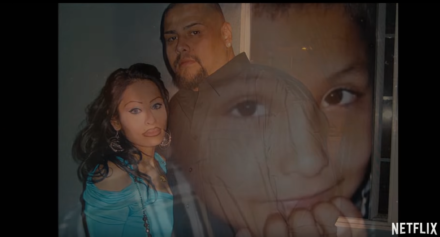
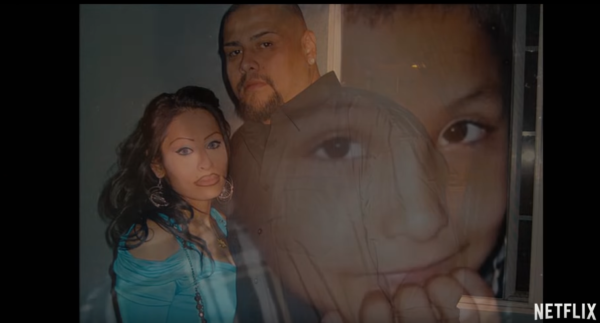
The name of Gabriel Fernandez still hangs heavy over the City of Los Angeles.
From the day the 8-year-old was found by Fire Department personnel on the floor of his Palmdale home after they responded to a 911 call from his mother, his story loomed large in the daily news. The paramedics had found Gabriel badly bruised and unresponsive, with profound injuries – broken ribs, a cracked skull, missing teeth, burnt skin, and BB bullets imbedded in his lungs and groin – that didn’t fit with the explanation they had been given for his condition. His mother, Pearl Sinthia Fernandez, and her boyfriend, Isauro Aguirre, claimed the boy had been injured by falling over a dresser and hitting his head. Gabriel was pronounced brain dead at the hospital on that same day, May 22, 2013; he was taken off life support and passed away two days later.
That tragic incident was the beginning of a seven-year ordeal for Gabriel’s family, his community, and the city itself. The child had been the victim of horrific and systematic abuse, perpetrated by his mother and Aguirre and allegedly motivated at least partly by Aguirre’s belief that the boy was gay; worse yet, other family members, as well as Gabriel’s teacher, had notified Children and Family Services multiple times over concerns that he was being mistreated, yet social workers had found, in every case but one, that their reports were unfounded – despite what seemed in retrospect to be clear indications to the contrary.
Fernandez and Aguirre were charged with first-degree murder in the death of Gabriel, with a special circumstance for torture, and in an unprecedented move, county prosecutors also charged four county social workers with one felony count each of child abuse and falsifying records.
The case dominated headlines as the ensuing investigation and court proceedings revealed ever more disturbing details about Gabriel’s short life and cruel death. The prosecution sought the death penalty for both of the perpetrators, who admitted to killing the child but claimed it had not been a pre-meditated act. Finally, in 2018, Aguirre was found guilty of the first degree changes and sentenced to death; Fernandez avoided the death penalty by agreeing to plead guilty.
In January of 2020, the charges against the four social workers were thrown out by a three-justice panel of the 2nd District Court of Appeal.
Now, Netflix is set to unveil “The Trials of Gabriel Fernandez,” a six-part docuseries which examines the case as it was laid out by LA County prosecutors, as well as chronicling journalistic efforts to track the weaknesses within the government agencies devoted to children’s welfare that permitted such a heartbreaking act to take place. Directed by documentarian Brian Knappenberger (“Nobody Speak: Trials of the Free Press”), it’s a gripping (and grim) deep dive into the case that may well be the most intense and upsetting true crime series the streaming network has produced so far.
Casting lead prosecutor Jon Hatami in the role of avenging hero, Knappenberger’s chronicle of the court case carefully avoids straying into sensationalism without shying away from the gruesome facts of Gabriel’s life. Through trial footage, interviews, and footage shot specifically for the show, we are given as comprehensive a look at the story as is possible in six hours of television, with the benefit and clarity of hindsight to assist in offering an overarching view of not only what happened, but of the systemic problems that led to a failure by those charged with protecting at-risk children to prevent the worst from happening to Gabriel. Perhaps most effectively, it repeatedly reminds us, through photos, footage, and the words of those who knew him, that Gabriel was a kind, loving, and gentle child who deserved much better treatment at the hands of those who should have been his caretakers.
As for the assertion that homophobia was a factor in Aguirre’s brutal beating and killing of his de-facto stepson, it doesn’t offer a lot of detail – prosecutors chose not to pursue a hate crime charge for strategic reasons, so that angle was only supplemental in proving a case for pre-meditation based solely on factual evidence – but it makes sure we hear about it in both through Hatami’s court statements and from the mouths of family members, who assert that Gabriel had been taken by the couple from his uncle and same-sex partner (previously given custody when his mother “didn’t want him” at birth) because they didn’t approve of a child being raised by gay parents. By all reports, Gabriel experienced the happiest and most supportive environment of his short life when he lived with them.
The Netflix series spends considerable time hammering home the shocking reality of the violence suffered by little Gabriel (described by Los Angeles Judge George G. Lomeli at Aguirre’s sentencing as “horrendous, inhumane and nothing short of evil”), and rightly so; to do anything less would be a disservice to his memory. Once it has done that, however, it sets its sights on the deeply shrouded county bureaucracy of Child and Family Services, the uniquely autonomous and powerful agency that oversees child welfare, and paints perhaps an even more disturbing picture of an organization overworked, understaffed, hamstrung by the financial priorities of privatization, and cloistered in a stubborn veil of secrecy that resisted not just inquiries from the press but from prosecutors as well. It also makes clear that law enforcement officials were well aware of the prior history of reported abuse in the Fernandez home before that fateful day when Gabriel’s life came to an end.
At the same time, Knappenberger takes care to offer a balanced view of the more complex ethical issues at the core of the case. His coverage of the four accused social workers, singled out in the minds of many as scapegoats by county officials looking for a means of damage control, is fair and compassionate, offering a glimpse at the daunting pressure and moral quandaries that face such civil servants; that it never quite lets them off the hook for the choices they made in handling Gabriel’s situation before it was too late is more testament to the journalistic integrity to which the series aspires.
Though the case of Gabriel Fernandez made the news nationwide, many outside of Los Angeles itself will likely only have passing familiarity with what happened. With “The Trials of Gabriel Fernandez,” Netflix is ensuring that Gabriel’s heartbreaking story will be known by millions – and while some may be hesitant to watch due to the disturbing nature of its conflict, it’s a show that demands to be seen. It reminds us, in no uncertain terms, that there are monsters in the world; but it also reminds us that for every Isauro Aguirre or Pearl Fernandez, there is also a Jon Hatami – someone who will stand up to fight for justice in the name of those who have suffered at their hands. Perhaps most important, it reminds us there is still much work to be done in perfecting the systems we have in place to serve our children – and that unrelenting, powerful journalism is still the best tool we have for holding those systems accountable.
“The Trials of Gabriel Fernandez” premieres on Wednesday, February 26, on Netflix. You can watch the trailer below.
Photos
PHOTOS: Cheers to Out Sports!
LGBTQ homeless youth services organization honors local leagues
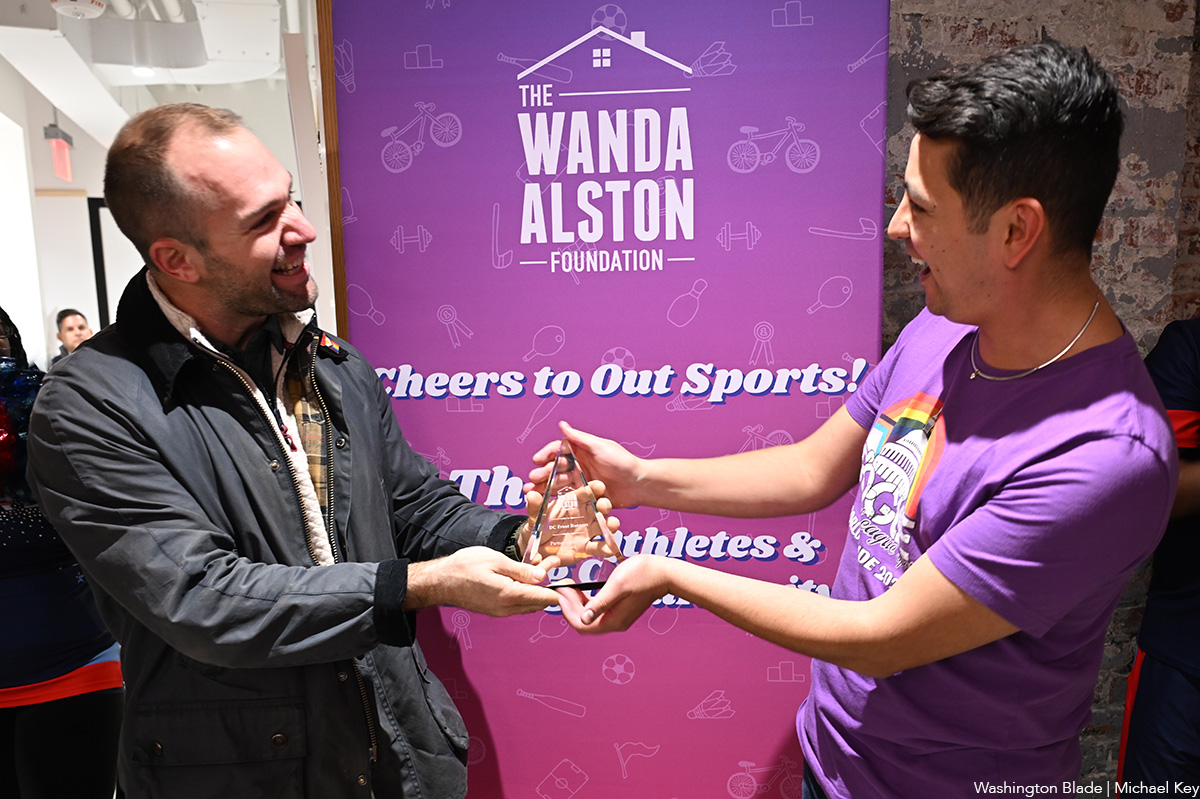
The Wanda Alston Foundation held a “Cheers to Out Sports!” event at the DC LGBTQ+ Community Center on Monday, Nov. 17. The event was held by the LGBTQ homeless youth services organization to honor local LGBTQ sports leagues for their philanthropic support.
(Washington Blade photos by Michael Key)
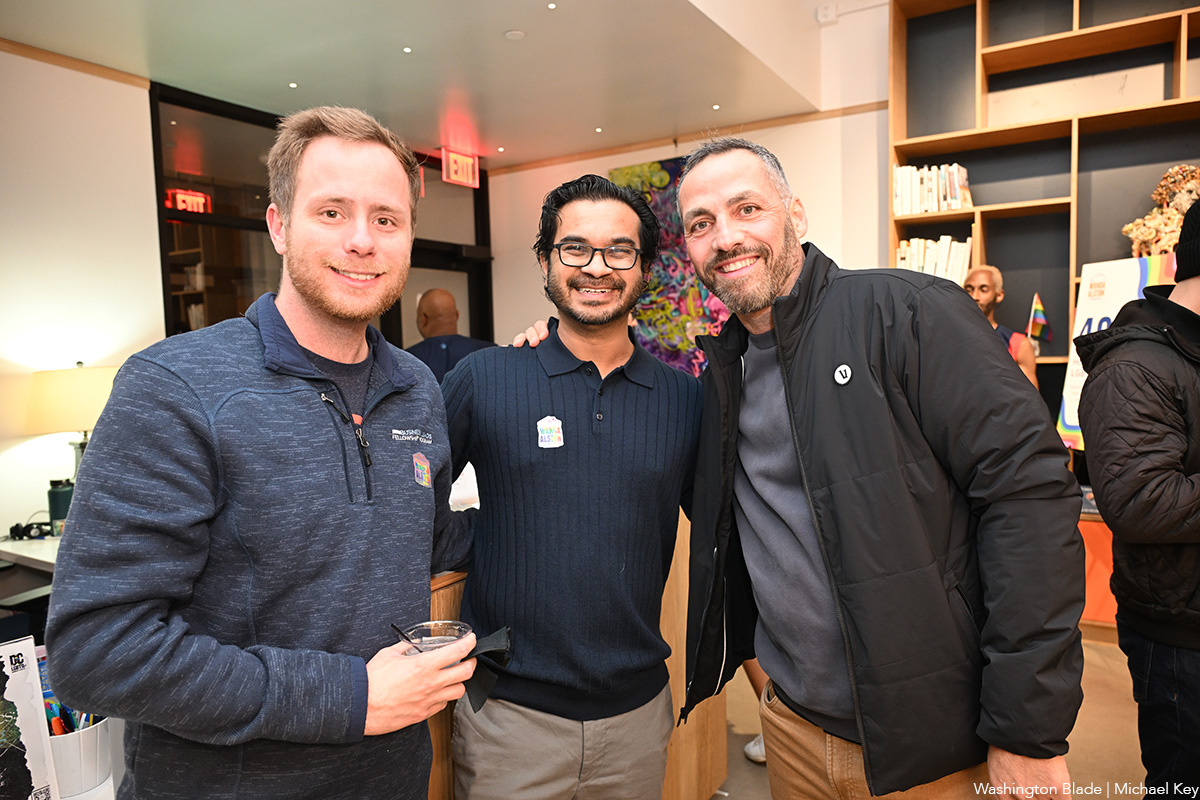
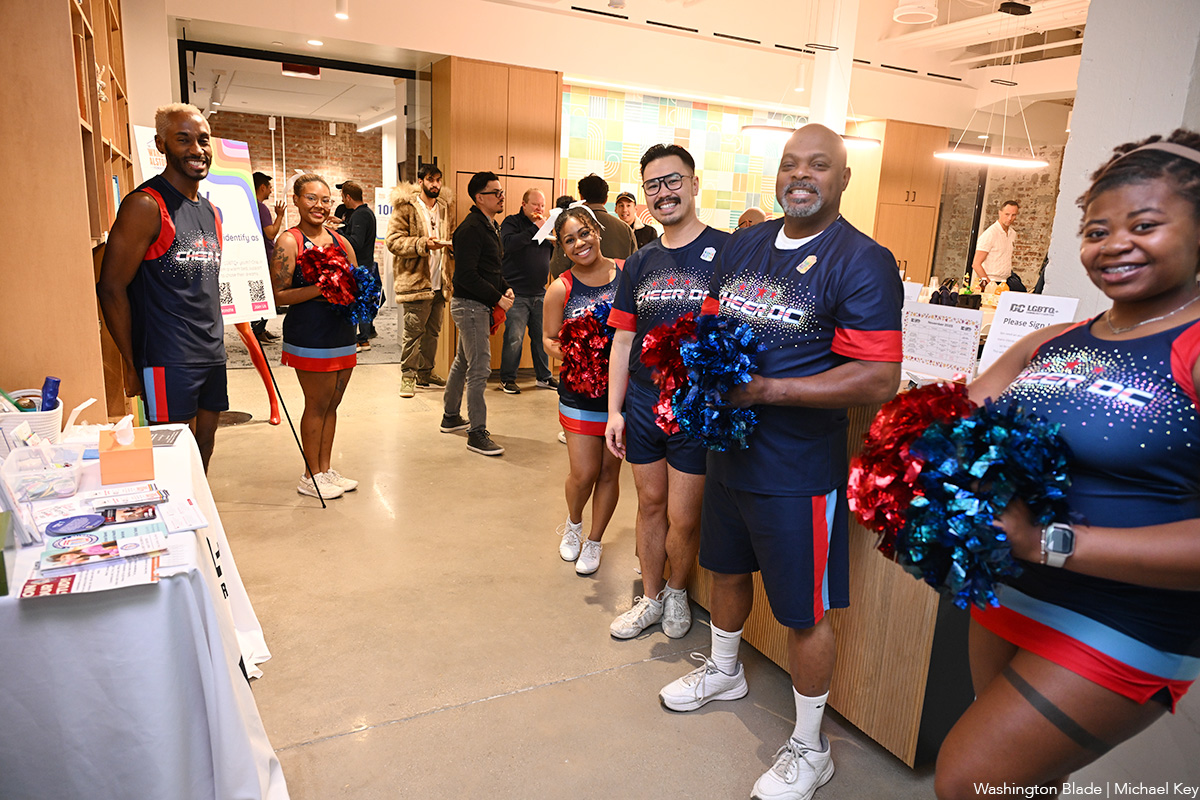
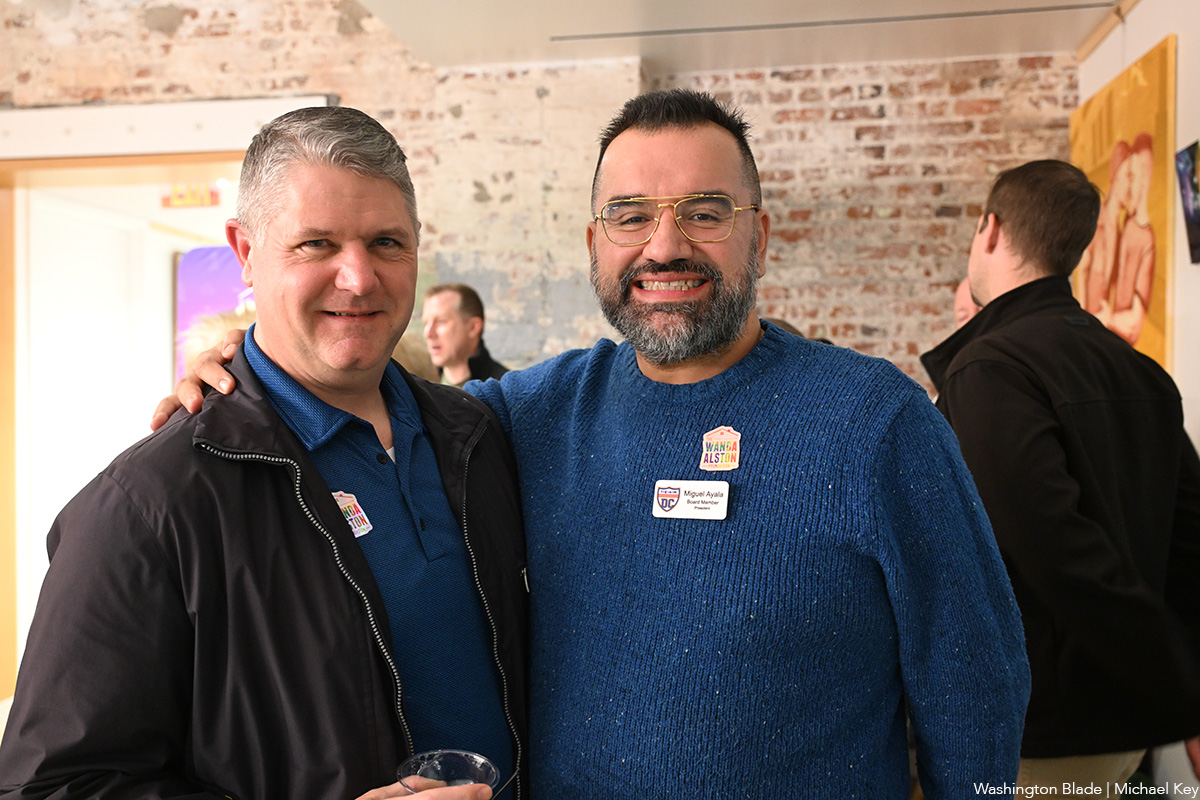
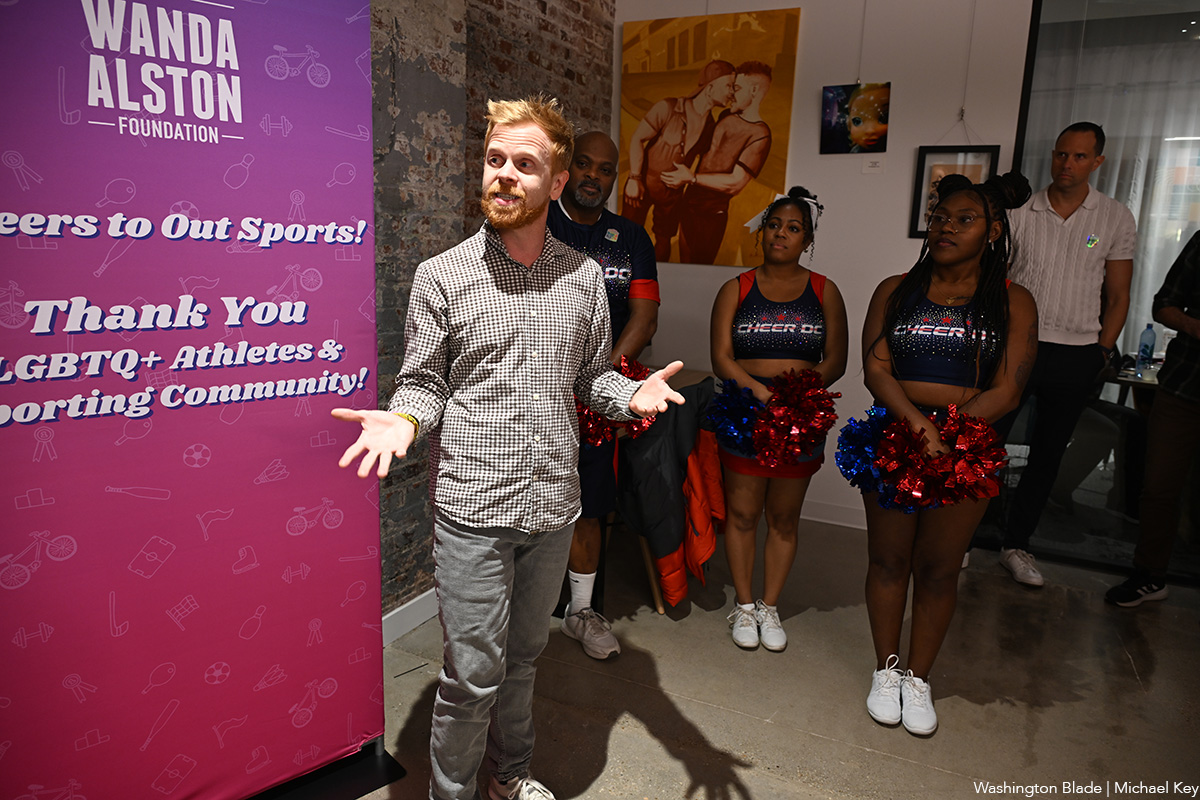
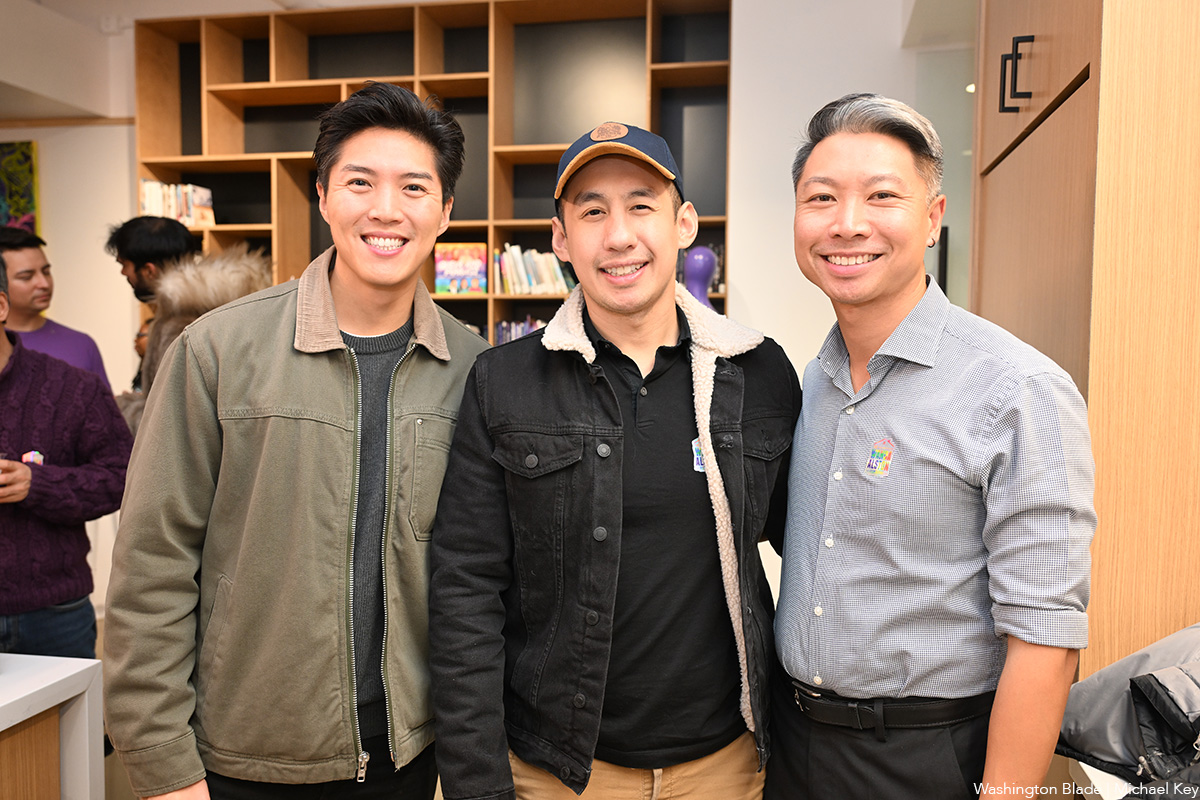
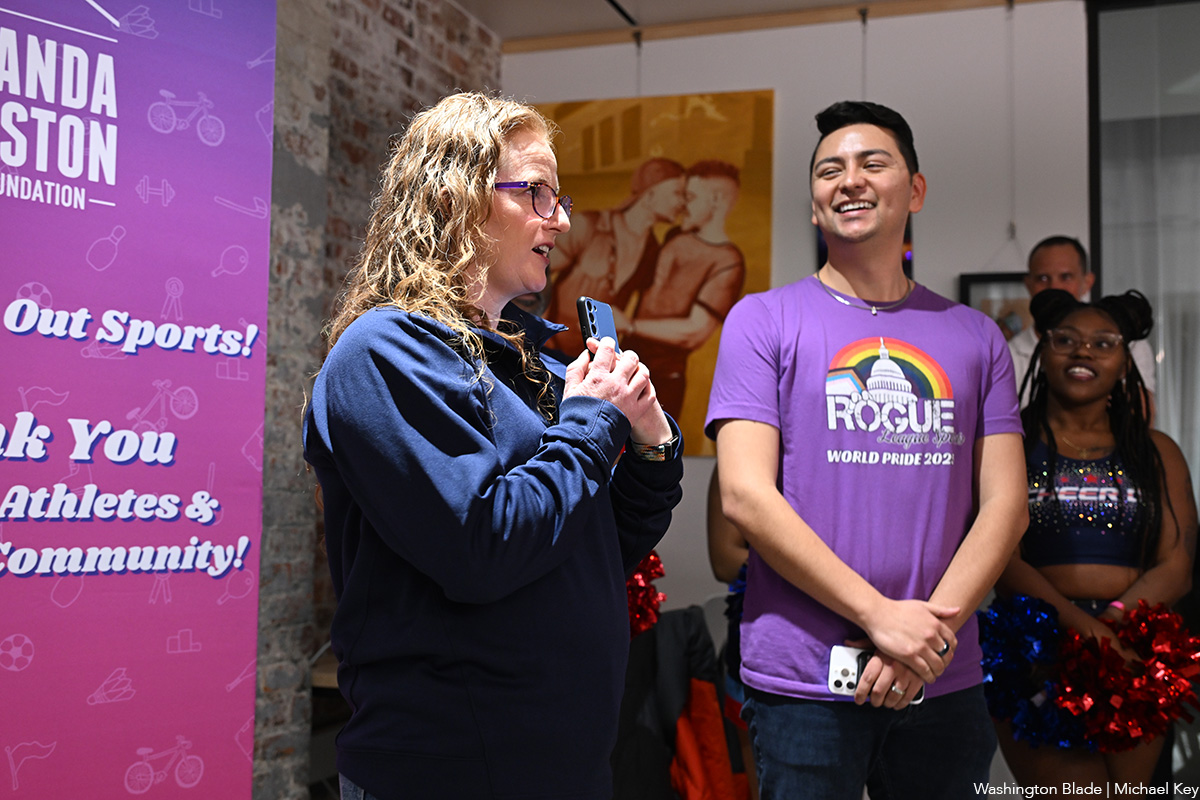
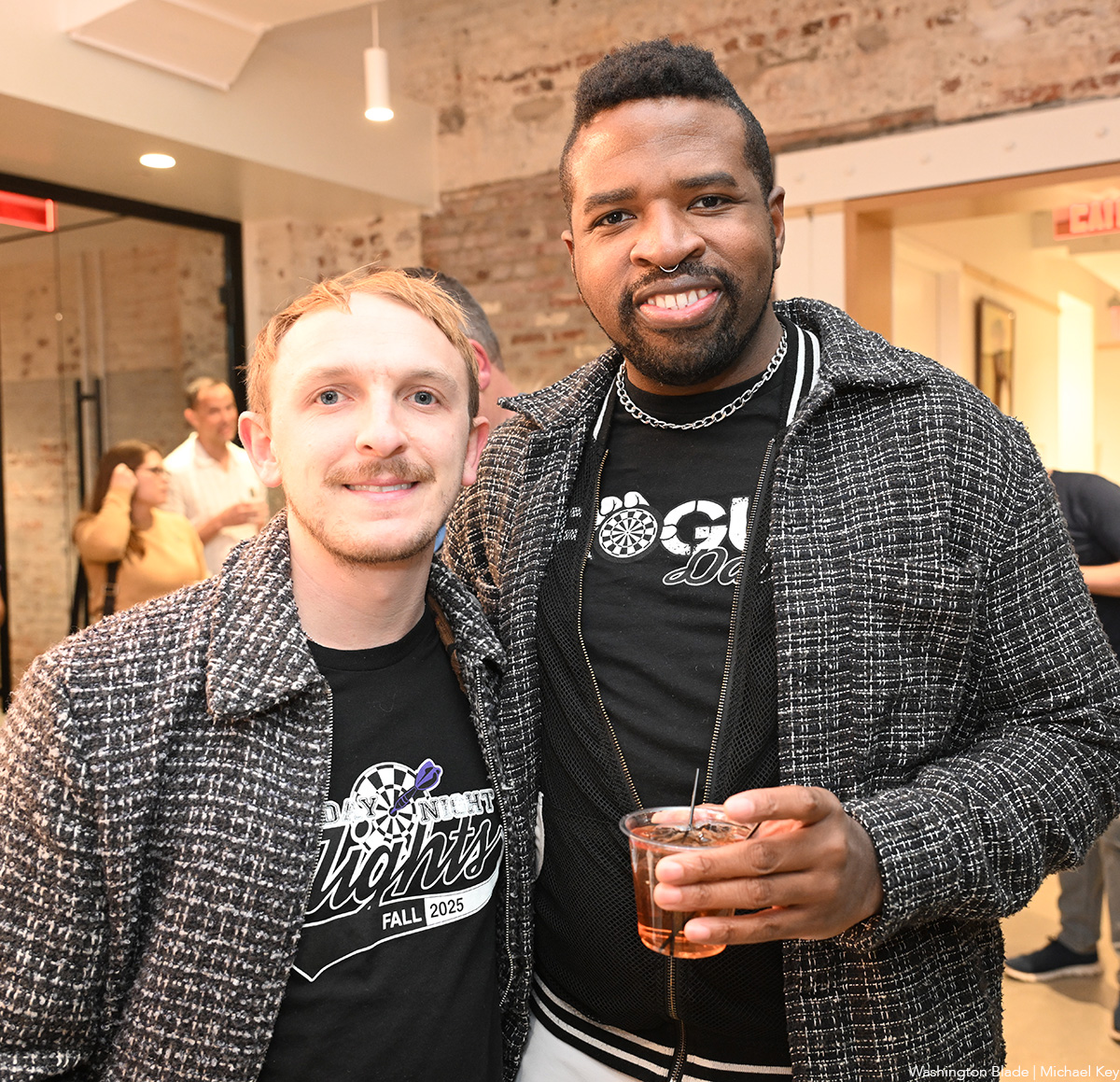
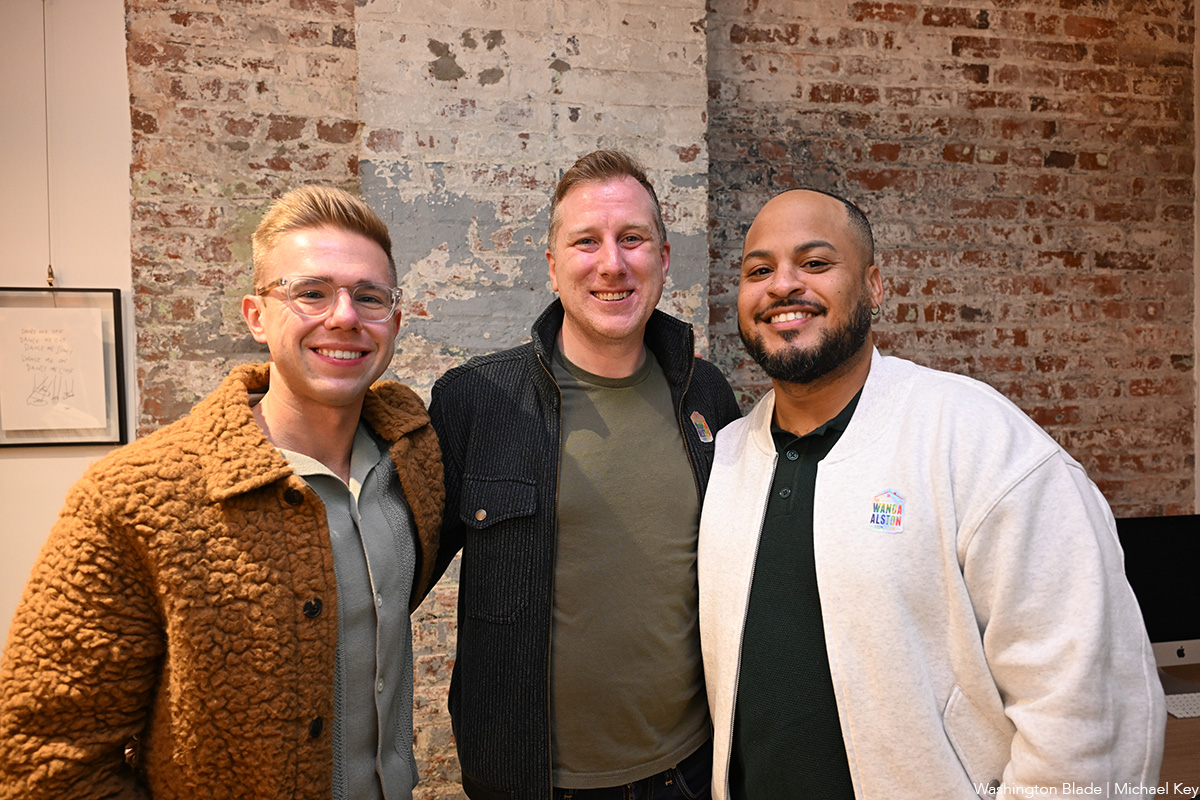
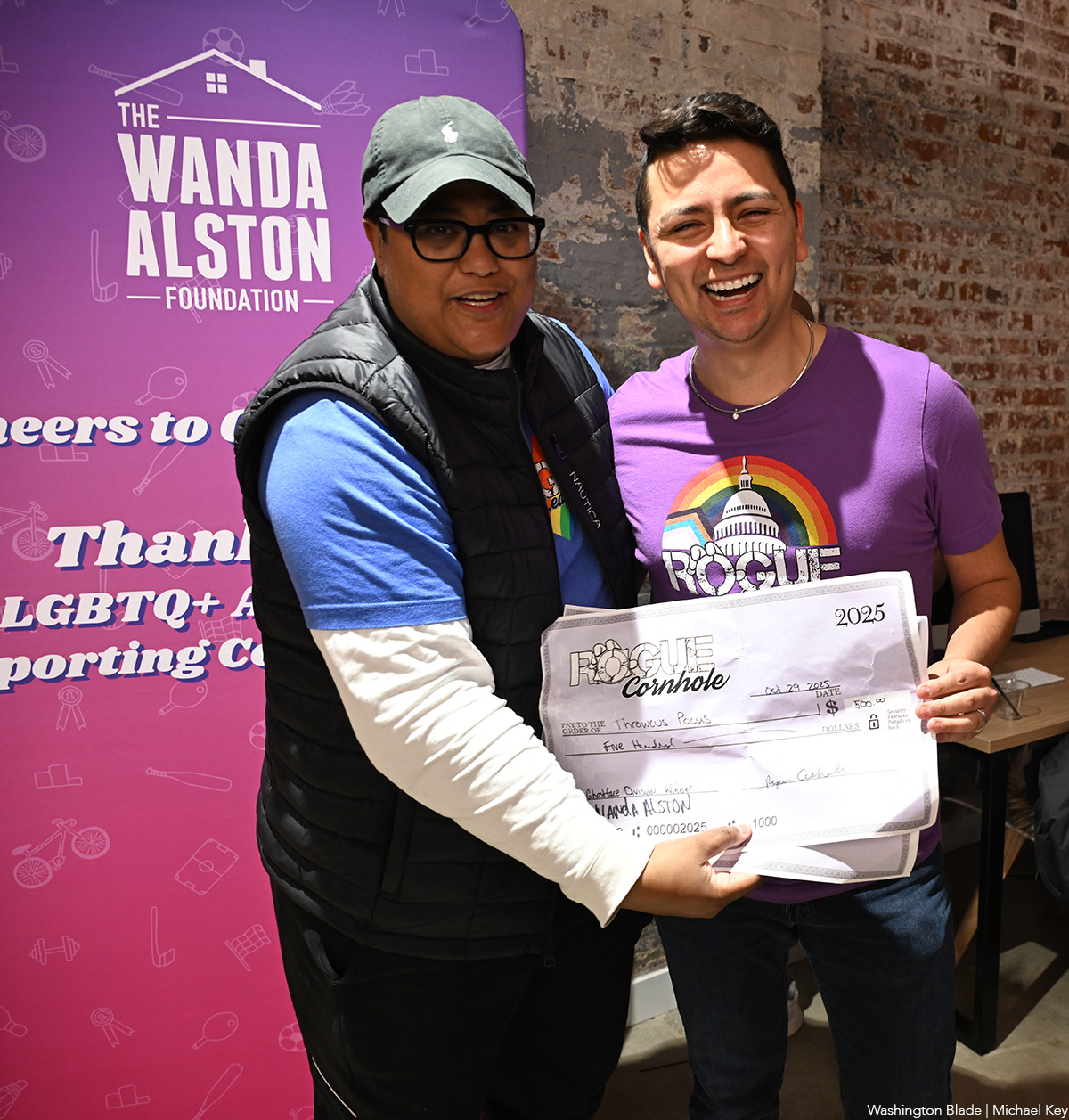
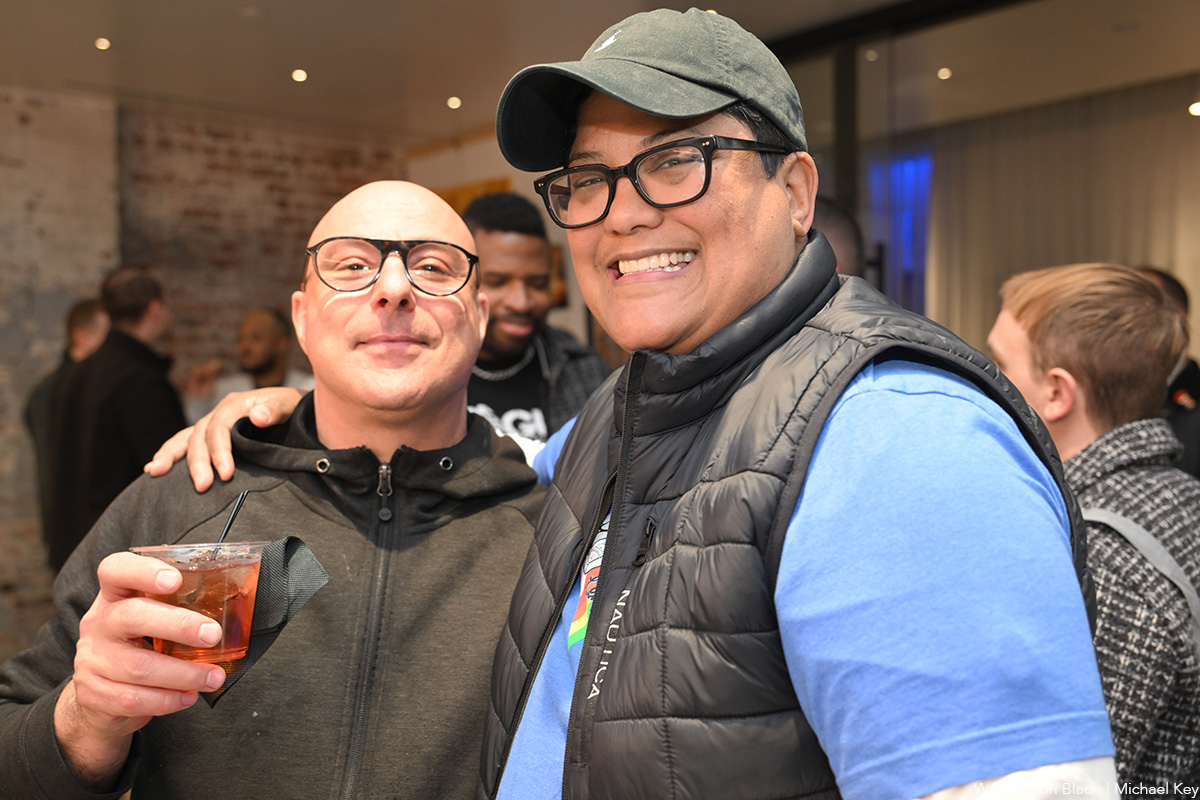
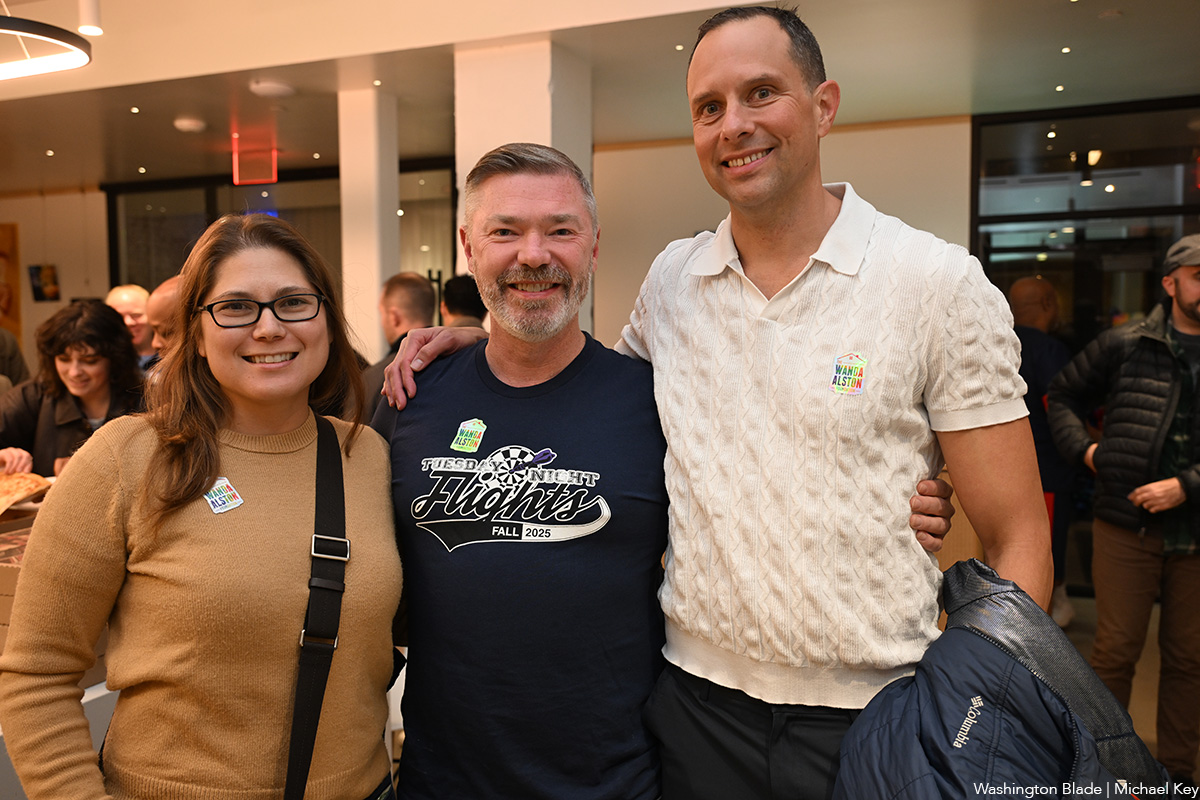
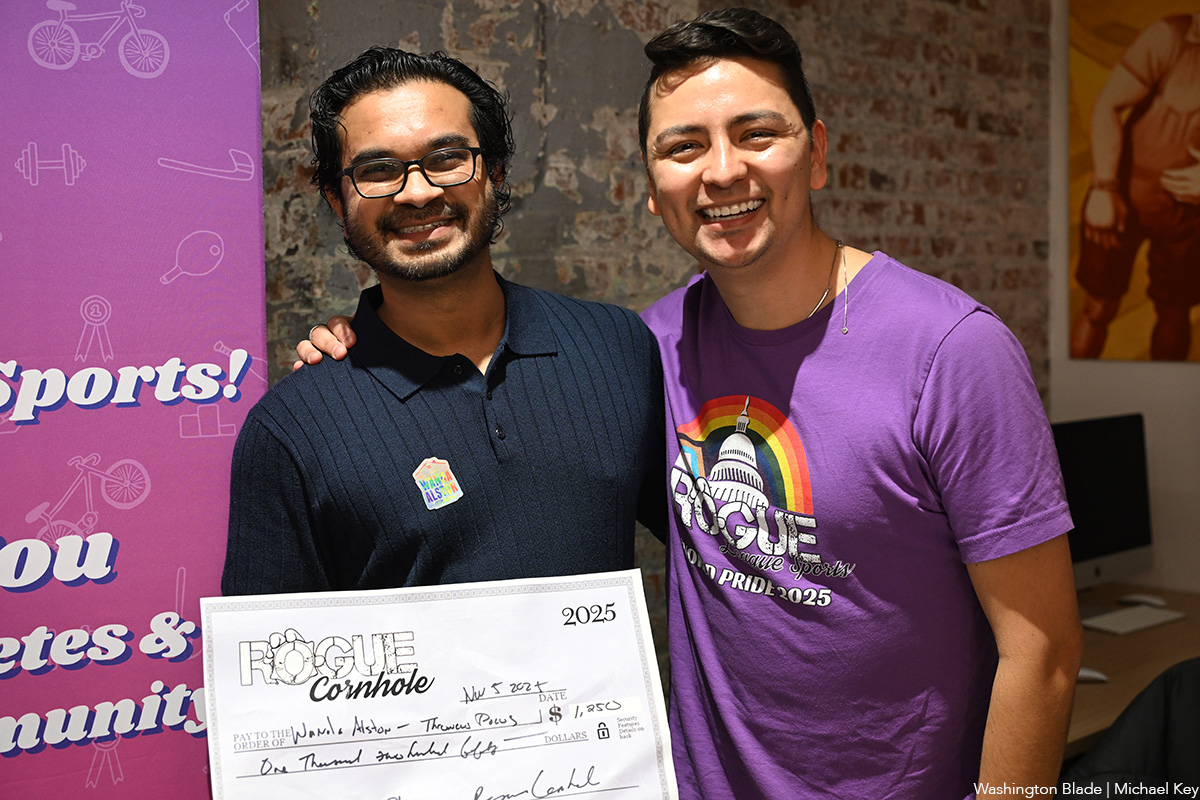
Theater
Gay, straight men bond over finances, single fatherhood in Mosaic show
‘A Case for the Existence of God’ set in rural Idaho
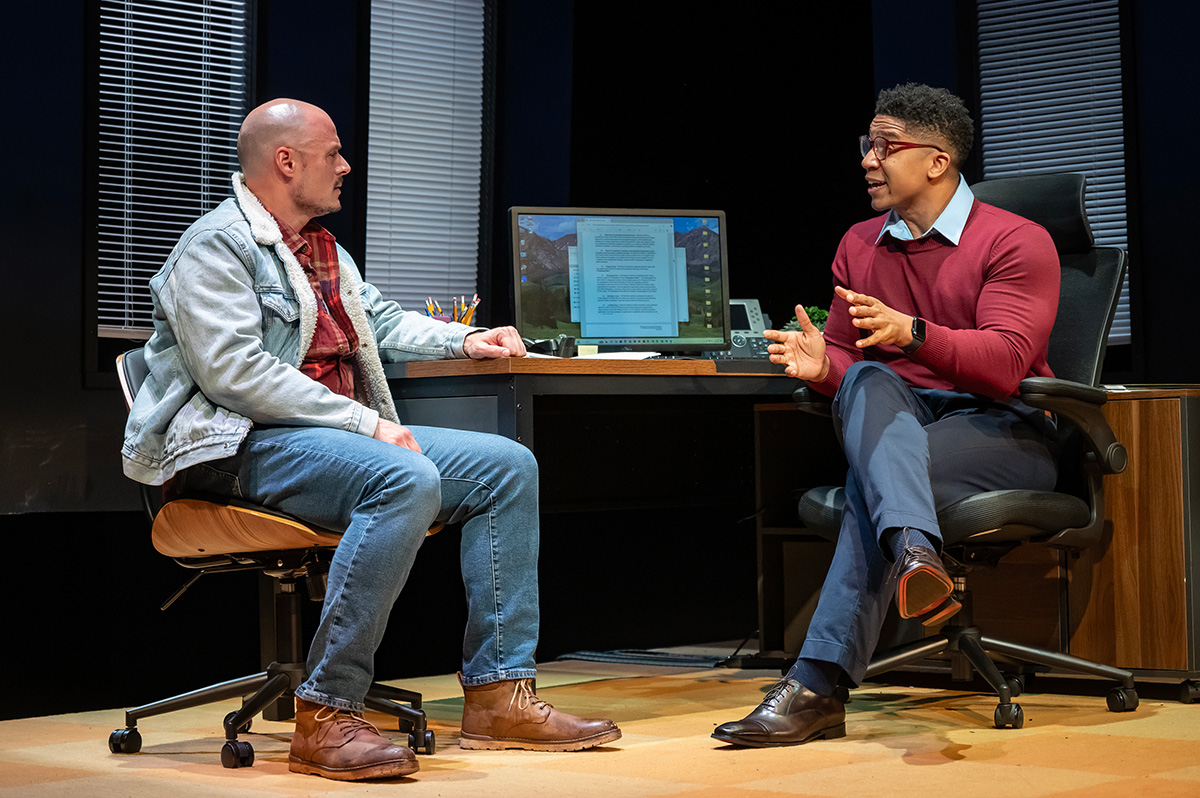
‘A Case for the Existence of God’
Through Dec. 7
Mosaic Theater Company at Atlas Performing Arts Center
1333 H St,, N.E.
Tickets: $42- $56 (discounts available)
Mosaictheater.org
With each new work, Samuel D. Hunter has become more interested in “big ideas thriving in small containers.” Increasingly, he likes to write plays with very few characters and simple sets.
His 2022 two-person play, “A Case for the Existence of God,” (now running at Mosaic Theater Company) is one of these minimal pieces. “Audiences might come in expecting a theological debate set in the Vatican, but instead it’s two guys sitting in a cubicle discussing terms on a bank loan,” says Hunter (who goes by Sam).
Like many of his plays, this award-winning work unfolds in rural Idaho, where Hunter was raised. Two men, one gay, the other straight (here played by local out actors Jaysen Wright and Lee Osorio, respectively), bond over financial insecurity and the joys and challenges of single fatherhood.
His newest success is similarly reduced. Touted as Hunter’s long-awaited Broadway debut, “Little Bear Ridge Road” features Laurie Metcalf as Sarah and Micah Stock as Ethan, Sarah’s estranged gay nephew who returns to Idaho from Seattle to settle his late father’s estate. At 90 minutes, the play’s cast is small and the setting consists only of a reclining couch in a dark void.
“I was very content to be making theater off-Broadway. It’s where most of my favorite plays live.” However, Hunter, 44, does admit to feeling validated: “Over the years there’s been this notion that my plays are too small or too Idaho for Broadway. I feel that’s misguided, so now with my play at the Booth Theatre, my favorite Broadway house, it kind of proves that.”
With “smaller” plays not necessarily the rage on Broadway, he’s pleased that he made it there without compromising the kind of plays he likes to write.
Hunter first spoke with The Blade in 2011 when his “A Bright Day in Boise” made its area premiere at Woolly Mammoth Theatre. At the time, he was still described as an up-and-coming playwright though he’d already nabbed an Obie for this dark comedy about seeking Rapture in an Idaho Hobby Lobby.
In 2015, his “The Whale,” played at Rep Stage starring out actor Michael Russotto as Charlie, a morbidly obese gay English teacher struggling with depression. Hunter wrote the screenplay for the subsequent 2022 film which garnered an Oscar for actor Brendan Frazier.
The year leading up to the Academy Awards ceremony was filled with travel, press, and festivals. It was a heady time. Because of the success of the film there are a lot of non-English language productions of “The Whale” taking place all over the world.
“I don’t see them all,” says Hunter. “When I was invited to Rio de Janeiro to see the Portuguese language premiere, I went. That wasn’t a hard thing to say yes to.”
And then, in the middle of the film hoopla, says Hunter, director Joe Mantello and Laurie (Metcalf) approached him about writing a play for them to do at Steppenwolf Theatre in Chicago before it moved to Broadway. He’d never met either of them, and they gave me carte blanche.
Early in his career, Hunter didn’t write gay characters, but after meeting his husband in grad school at the University of Iowa that changed, he began to explore that part of his life in his plays, including splashes of himself in his queer characters without making it autobiographical.
He says, “Whether it’s myself or other people, I’ve never wholesale lifted a character or story from real life and plopped it in a play. I need to breathing room to figure out characters on their own terms. It wouldn’t be fair to ask an actor to play me.”
His queer characters made his plays more artistically successful, adds Hunter. “I started putting something of myself on the line. For whatever reason, and it was probably internalized homophobia, I had been holding back.”
Though his work is personal, once he hands it over for production, it quickly becomes collaborative, which is the reason he prefers plays compared to other forms of writing.
“There’s a certain amount of detachment. I become just another member of the team that’s servicing the story. There’s a joy in that.”
Hunter is married to influential dramaturg John Baker. They live in New York City with their little girl, and two dogs. As a dad, Hunter believes despite what’s happening in the world, it’s your job to be hopeful.
“Hope is the harder choice to make. I do it not only for my daughter but because cynicism masquerades as intelligence which I find lazy. Having hope is the better way to live.”
Books
New book highlights long history of LGBTQ oppression
‘Queer Enlightenments’ a reminder that inequality is nothing new
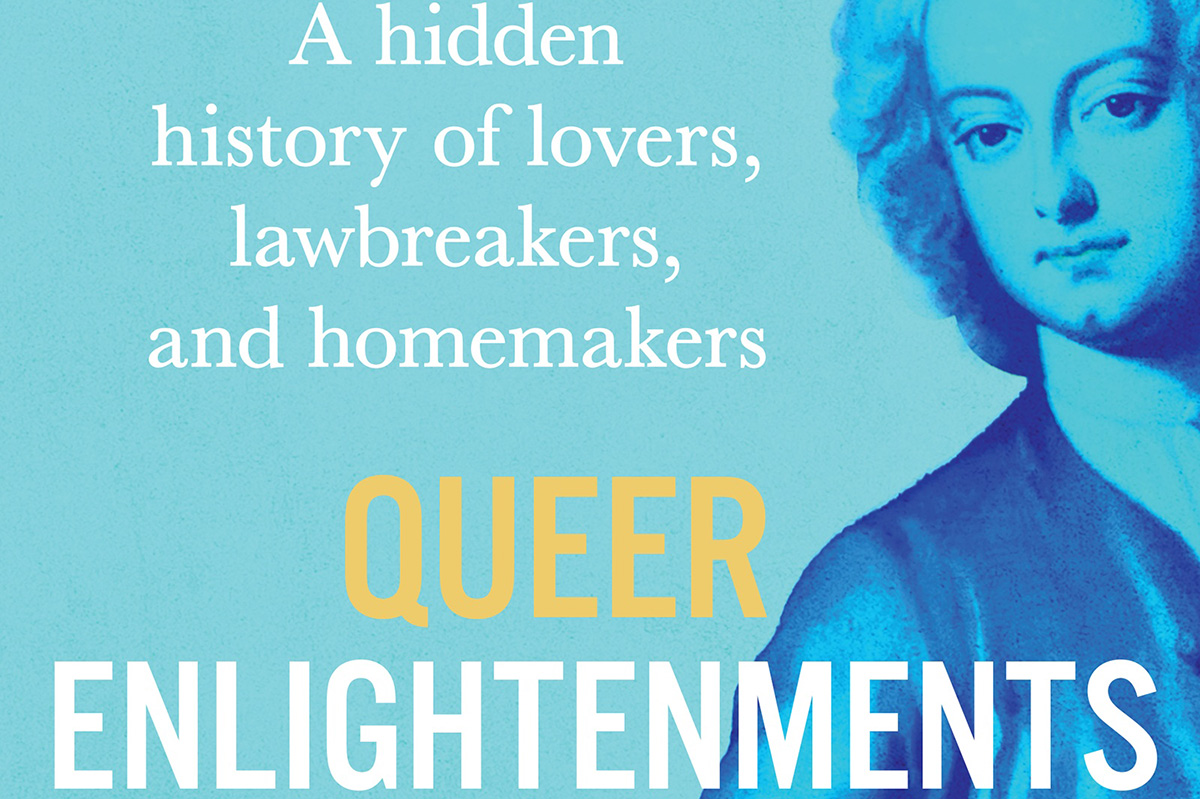
‘Queer Enlightenments: A Hidden History of Lovers, Lawbreakers, and Homemakers’
By Anthony Delaney
c.2025, Atlantic Monthly Press
$30/352 pages
It had to start somewhere.
The discrimination, the persecution, the inequality, it had a launching point. Can you put your finger on that date? Was it DADT, the 1950s scare, the Kinsey report? Certainly not Stonewall, or the Marriage Act, so where did it come from? In “Queer Enlightenments: A Hidden History of Lovers, Lawbreakers, and Homemakers” by Anthony Delaney, the story of queer oppression goes back so much farther.

The first recorded instance of the word “homosexual” arrived loudly in the spring of 1868: Hungarian journalist Károly Mária Kerthbeny wrote a letter to German activist Karl Heinrich Ulrichs referring to “same-sex-attracted men” with that new term. Many people believe that this was the “invention” of homosexuality, but Delaney begs to differ.
“Queer histories run much deeper than this…” he says.
Take, for instance, the delightfully named Mrs. Clap, who ran a “House” in London in which men often met other men for “marriage.” On a February night in 1726, Mrs. Clap’s House was raided and 40 men were taken to jail, where they were put in filthy, dank confines until the courts could get to them. One of the men was ultimately hanged for the crime of sodomy. Mrs. Clap was pilloried, and then disappeared from history.
William Pulteney had a duel with John, Lord Hervey, over insults flung at the latter man. The truth: Hervey was, in fact, openly a “sodomite.” He and his companion, Ste Fox had even set up a home together.
Adopting your lover was common in 18th century London, in order to make him a legal heir. In about 1769, rumors spread that the lovely female spy, the Chevalier d’Éon, was actually Charles d’Éon de Beaumont, a man who had been dressing in feminine attire for much longer than his espionage career. Anne Lister’s masculine demeanor often left her an “outcast.” And as George Wilson brought his bride to North American in 1821, he confessed to loving men, thus becoming North America’s first official “female husband.”
Sometimes, history can be quite dry. So can author Anthony Delaney’s wit. Together, though, they work well inside “Queer Enlightenments.”
Undoubtedly, you well know that inequality and persecution aren’t new things – which Delaney underscores here – and queer ancestors faced them head-on, just as people do today. The twist, in this often-chilling narrative, is that punishments levied on 18th- and 19th-century queer folk was harsher and Delaney doesn’t soften those accounts for readers. Read this book, and you’re platform-side at a hanging, in jail with an ally, at a duel with a complicated basis, embedded in a King’s court, and on a ship with a man whose new wife generously ignored his secret. Most of these tales are set in Great Britain and Europe, but North America features some, and Delaney wraps up thing nicely for today’s relevance.
While there’s some amusing side-eyeing in this book, “Queer Enlightenments” is a bit on the heavy side, so give yourself time with it. Pick it up, though, and you’ll love it til the end.
The Blade may receive commissions from qualifying purchases made via this post.
-

 Movies4 days ago
Movies4 days agoIn solid ‘Nuremberg,’ the Nazis are still the bad guys
-

 Books4 days ago
Books4 days agoNew book highlights long history of LGBTQ oppression
-

 Theater3 days ago
Theater3 days agoGay, straight men bond over finances, single fatherhood in Mosaic show
-

 Chile3 days ago
Chile3 days agoChilean presidential election outcome to determine future of LGBTQ rights in country

